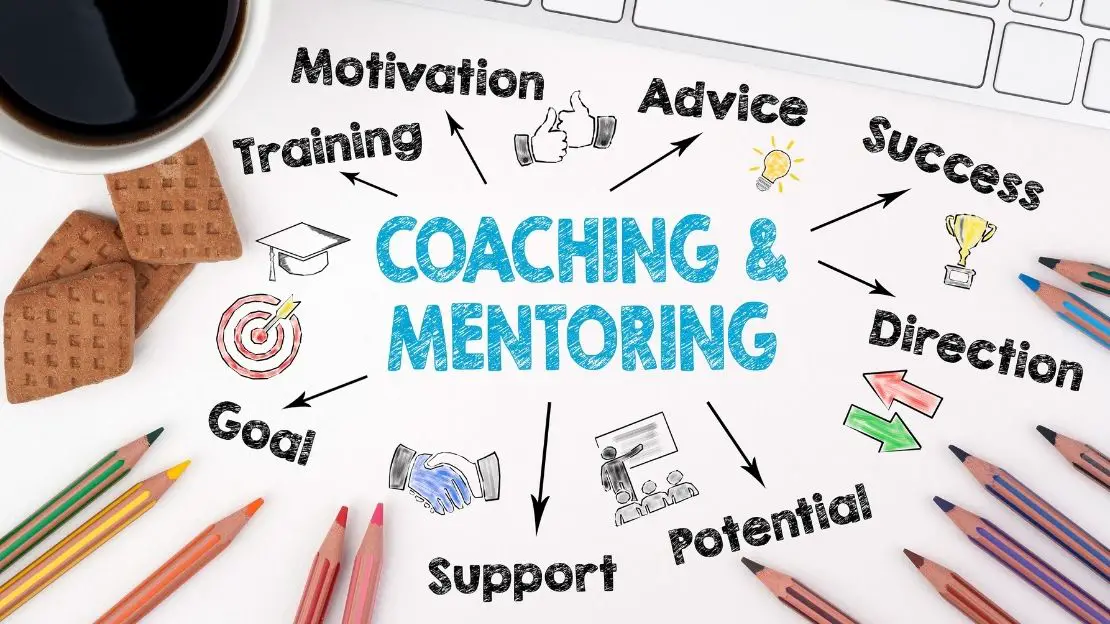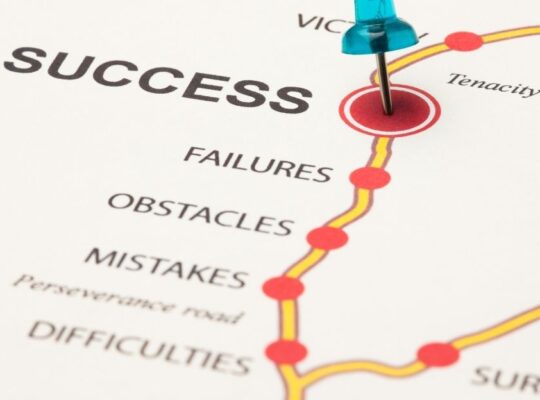Why Can’t I Get What I Want?
Have you ever wondered why it seems so difficult to obtain the things you desire in life? Maybe it’s a specific job, a relationship, a raise, or a material item such as a house or a car. Whatever it may be, does it always seem to be just out of reach to the point where you feel like you’ll never obtain it?
Perhaps you’ve pondered what you think are all of the possible reasons that thing you desire is out of reach, but what if I told you that you had far more control over getting what you want then you realize? What if the reason you aren’t getting what you want is you? What if the way you think and the beliefs you hold are holding you back?
Whether you realize it or not your core beliefs have a significant impact on the way you feel about yourself and your abilities, as well as the things you accomplish and achieve in life. Defined, core beliefs are the subconscious convictions and judgments we hold about ourselves. These convictions and judgments then define our sense of self.
Our core beliefs are responsible for how we see ourselves, how we view others, how we view the world as a whole, and even how successful we become in self-actualizing our dreams and desires (Luna, 2019). Thus, one can conclude that the route to viewing ourselves, others, and the world positively, and they way to make our dreams become reality is to ensure that our core beliefs are positive.
First, we must understand how core beliefs, whether negative or positive, form. The beliefs we hold are the result of ingrained patterns of thinking (The Benefits of Positive Thinking, 2019).
The best way to explain this concept is to demonstrate it via an example. Let’s say we were met with a task that was so mentally challenging that we couldn’t figure out how to overcome it.
Given that scenario we would likely form the following thought: “I cannot do this.” When placed in a similar scenario with a similar outcome, that same negative thought is reinforced. After a few instances of this taking place, the reinforced thought then transforms into an automatic response to being placed in a mentally challenging situation.
Thus, the negative thought becomes a negative belief. The difference between the thought and the belief is that the thought is situational, whereas by the time it has become a belief it extends beyond one scenario and becomes our automatic response in most scenarios.
The Effects of Negative Beliefs
The impact of negative beliefs extends beyond simple negative thinking. Holding negative beliefs about ourselves, our abilities, and our future poses a lot of limitations that can significantly impact our ability to pursue and manifest the things we desire. The following outlines some of these effects and explain how these impacts limit our ability to obtain what we desire.
Poor Mental Health
All people think negatively from time to time, but when a negative thought has expanded to become a negative belief it can mean detrimental impacts on mental health. Those who engage in a continual negative thinking can experience prolonged bouts of anger, anxiety, irritability, and depression.
Research has also begun correlating the stress created from negative thinking to changes in the brain which affect the likelihood of acquiring mental disorders such as ADHD, schizophrenia, and various mood disorders (Power of Positivity, 2015).
Poor mental health impacts our ability to obtain the things we desire because it hinders our ability to reason, analyze, and make sound decisions. Without the ability to perform those tasks, we lack the ability to process the information, take the risks, and make decisions that will push us towards our goals.
Poor Physical Health
Our physical health can be greatly impacted by negative beliefs and thinking. When we think negative thoughts our brains trigger the same response in our bodies as if we were in real danger.
Thus, our physical bodies experience real stress such as a rapid heartbeat, raised blood pressure, and heightened arousal. There have also been recent studies which imply that psychological stress caused by negative thinking has overstimulated our body’s response system and has led to a weakening of the immune system and increased instances of disease in the body (Power of Positivity, 2015).
Simply put, without physical stamina and health we are unable to do the work needed to help us achieve our dreams.
Increased Stress Levels
Research suggests that there is a link between negative thoughts and reported increases in levels of stress. WebMD notes that people who engage in regular patterns of negative thinking often perceive situations through a negative lens, which causes them to experience situations negatively. Thus, these individuals often experience poor concentration and poor judgement, among other things.
Increased levels of stress prove to have a negative impact on our ability to make decisions. Science suggests that feeling stressed changes how people weigh risk and reward. An article published in Current Directions in Psychological Science, a journal of the Association for Psychological Science, notes that when people are placed under stress, they pay more attention to positive information and discount negative information (Association for Psychological Science, 2012).
Essentially, when people are stressed and need to make a difficult decision, they look more at the upsides of the alternatives they’re considering and look less at the downsides (Mather & Lighthall, 2012). While this may sound good, it could be detrimental, as not enough weight is given to the potential negative impacts of a decision. This can mean that decisions are made hastily without careful consideration of all potential outcomes.
Another study in the Journal of Clinical Psychology looked at the impact of stress on task performance. Participants were asked to sort objects into two categories. Those who reported that they stressed 50% of the time or more had a greater disruption in their ability to sort objects as the difficulty of the task increased.
The study determined that an increased level of negative thoughts which led to decreased stress is what led to the disruption in performance of the task. Basically, when the brain is faced with complex tasks, negative thinking impairs the ability to process information clearly and quickly (Power of Positivity, 2015).
The impact of stress and subsequently impaired decision making means an inability to make the necessary decisions that will lead us to our desires. We are more inclined to become inactive and procrastinate due to stress or make poor decisions that keep us further from rather than push us closer to our goals.
Fixed Mindset
Those who engage in continual patterns of negative thinking more often than not possess a fixed mindset, as their beliefs about themselves and their abilities are classified by the belief that one is essentially born with all the knowledge and talent, they’ll ever have in a given area.
Thus, they have a tendency to believe that they cannot improve in areas of weakness. Fixed mindsets are highly detrimental in the pursuit of our desires. These mindsets limit our awareness, breed complacency and mediocrity, hinder our ability to cope with change, and foster an environment where we can easily become stagnant. Awareness is limited because feedback from others is rejected, as it is seen as a personal attack rather than a constructive means of critique.
Complacency and stagnancy result from this decreased awareness, since a lack of awareness generally means an inability to see the need to improve in certain areas (Woodlard, 2018). Additionally, since the fixed mindset is characterized by a belief that new knowledge or skills can be obtained, no growth can occur.
Possessing the core belief that we cannot grow or obtain more knowledge limits us from reaching our full potential, which in turn limits our achievements to what we are naturally skilled at.
Those things which require more knowledge or effort are strayed away from which keeps us from meeting our goals and achieving our dreams.
Low Self-Esteem
The research of Carol Dweck and her colleagues via several studies uncovered a link between fixed mindsets and a person’s likelihood to have low self-esteem or depression. A series of studies uncovered that the more fixed the mindset of a person was, the more likely they were to remember negative events.
It was this memory of negative events that led to an increase in helplessness which made way for increased reports of depression (Growth mindset associated with various positive outcomes (competence, relatedness, learning, vitality, adjustment), 2012).
Another set of studies examined the link between mindsets and goal setting. Studies showed that those with fixed mindsets established validation goals that focus on being acknowledged by others for being good. Meanwhile, those with a growth mindset tended to establish growth goals, which focus on trying to learn and make progress.
The conclusion drawn was that those with validation goals became more depressed the less they participated in problem-solving in response to negative circumstances as a result of their fixed mindset.
The opposite was seen in those with a growth mindset and subsequently growth goals. They leaned towards more problem solving when faced with negative circumstances which reduced instances of depression (Growth mindset associated with various positive outcomes (competence, relatedness, learning, vitality, adjustment), 2012).
This research suggests that a fixed mindset, which is essentially a negative core belief about our abilities, decreases our confidence in ourselves. This lack of belief in ourselves keeps us from taking risks and taking steps that will guide us towards our goals.
Poor Self-Actualization
Self-actualization is a concept initially introduced by Kurt Goldstein which refers to the top tier of Maslow’s hierarchy of needs found in his research about human motivation. Simply defined, self-actualization is the psychological process aimed at maximizing the use of a person’s abilities and resources. This means that self-actualization is the full realization of a person’s creative, intellectual, and/or social potential (Couture et. al., 2007).
Negative beliefs hinder self-actualization because they cause us to hold what’s known as cognitive distortions, according to LiveScience. Cognitive distortions reflect the ways our minds convince us of untruths.
Not only do these distortions cause us to create negative thoughts about ourselves, our abilities, and our lives, but they also work to reinforce negative thoughts we hold by repeating them on a never-ending loop (Smith, 2018).
These cognitive distortions interfere with what we know as the Law of Attraction. The Law of Attraction states that people attract what they focus their attention on and what they are in emotional harmony with.
Given that definition one would assume that negative cognitive distortions would then cause us to focus our attention on and be in emotional harmony with negative things. Thus, we would attract negative things into our lives as a result.
How to Change Negative Beliefs
Just because you currently hold negative beliefs does not mean you are bound to those beliefs forever. You can in fact change your negative to positive beliefs and doing so will help you in the pursuit of your dreams and desires.
Identify the Negative Beliefs
Before a problem can be solved, it must first be identified. So before you can change negative beliefs you must first recognize and identify them. Alethia Luna (What Are Toxic Core Beliefs, 2019) outlines a guideline to help uncover potential negative beliefs that may be limiting you:
- Look for judgements you hold about yourself that start with “I…” For example:
- I am unlovable
- I am worthless
- I am stupid
- I am not enough
- I am a mistake
- Look for supporting beliefs used to uphold core beliefs. These are just reasons we use to validate the negative core beliefs we hold. For example:
- I am unlovable …. because everyone in my life leaves me
- I am stupid …. Because I was unable to solve that problem
- Keep a record of your thoughts throughout the day. This will allow you to track the negative beliefs you hold and the events/experiences that trigger those negative thought patterns. This gives you the awareness needed to begin stopping negative thoughts in their tracks.
Uncover the Root of the Beliefs
Beliefs don’t just form out of nowhere. The negative beliefs we hold are tied to specific experiences and events that have occurred in our lives. As noted in the previous step, keeping a record of negative thoughts helps you to begin the process of uncovering the root of the negative beliefs you hold.
As you look at the experiences and events that trigger the beliefs, you can learn to respond appropriately to those events in a way that doesn’t trigger a negative thought. Additionally, you can then work to uproot that belief by addressing the event/experience that triggers it.
Positive Thinking
Positive thinking is the key to overriding negative beliefs. If we are going to uproot negative beliefs, we must change the way we think for the better. Doing so allows us to think of ourselves, lives, and abilities better which then allows our actions to align in a way that will help us pursue and actually achieve the things we desire.
Not only does positive thinking work to uproot negative beliefs and replace them with positive ones, but science shows that positive thinking can also improve mental health, decrease stress, and improve physical health outcomes. These shifts put us in a better mental and physical space to do the work required to work towards and achieve our goals.
The process of altering our thoughts for the positive can be accomplished by going through the following steps:
- Disprove the Negative Belief: The best way to uproot a negative belief is to prove that belief holds no weight. This means taking a negative belief that you hold, such as “I am unlovable” and proving it wrong by outlining all the people in your life that you know love you.
You can bolster the truth of the secondary statement, “I am loved by person x, y,z” and further disprove the negative belief by adding supporting evidence. For example, “I am loved by person x and I know this because person x is there for me when I need a shoulder to cry on.” - Replace with an Alternative Belief: Simply put, replace negative beliefs with positive affirmations. Once you have outlined why your pattern of thinking is false, you need to replace that line of thinking with another line of thinking As silly as it may sound, daily reciting of positive affirmations can actually reprogram the way you think.
Once your thoughts change, your beliefs change. And once your beliefs change your actions begin to change for the better. Writing out affirmations that directly oppose the negative beliefs you hold will gradually shift your thought pattern for the better.
Visualization
Visualization is the process of seeing the things you want in life as though they are. It’s more than simply hoping or wishing for something. It is seeing what you want as yours, and letting that belief alter your thoughts and drive in such a way that you actually begin to take steps to achieve what you want.
True visualization mobilizes our wants into action. It’s important to note that visualization is a process and not a means to instantly manifest what we want instantaneously (Manifestation Pathways, 2018). It takes time, put with time and proper practice visualization can lead us to the things we desire most.
This step can be a transformative one when it comes to changing our negative beliefs for the better. By visualizing the positive beliefs we desire to hold about ourselves and embracing them as though they are true, we can mobilize our minds and energy in a way that motivates us to truly change our beliefs.
It is more than just hoping our beliefs improve for the better, but it moves us to formulate an action plan for how we will handle when we are faced with a negative belief or thought. It’s taking what we want and taking the necessary steps to achieve it.
Visualization can also prove to be a beneficial support tool in reinforcing positive beliefs and uprooting negative beliefs because it allows you to visualize what life would be like without the impact of the negative beliefs. By seeing how your life will be changed for the better (i.e. more joy, more content, more creative, more confident, etc.) you can stay focused on taking the necessary steps to move towards positive beliefs. Ultimately, visualization gives and helps to sustain the motivation needed to commit and work through the process of replacing negative beliefs.
Develop a Plan
There needs to be a practical plan in place that will help you address negative thoughts that will inevitably arise. The process of altering our beliefs from negative to positive is ongoing and will not occur instantaneously. It requires consistent and regular practice to permanently shift the way we think and what we believe.
Each person’s action plan will be unique to them. However, each plan should adequately acknowledge negative thoughts that arise, swiftly disprove those thoughts, rapidly replace those thoughts and then reinforce positive thoughts continuously.
A sample action plan may look like this:
- Write down the negative thought/belief. Identify the situation that led to the thought/belief. What emotions accompany the thought/belief/
- Disprove the negative thought/belief. Write out why and how the thought/belief are false.
- Replace the negative thought/belief with a positive thought belief (i.e. recite affirmations, meditate, reach out to a friend to have them share observations of you that speak positively about you, etc.)
- Reinforce the positive thoughts/beliefs (i.e. track your progress/successes, write out your good qualities/traits, engage in an activity that highlights your strengths/positives, etc.)
Reframe the Negative
We won’t get it right 100% of the time and that is okay. We must learn how to properly view failures and mistakes in a way that prevents us from internalizing mistakes as reflections of ourselves.
Rather than viewing our flaws as concrete representations, we should view our mistakes as a learning opportunity. This allows us to develop a growth mindset that helps us to better reject negative beliefs about ourselves that we might otherwise adopt.
A growth mindset, as outlined by Stanford psychologist Carol Dweck, defines a growth mindset as the belief that one has the ability to learn and grow. Dweck writes in her book, Mindset: The New Psychology of Success, “This growth mindset is based on the belief that your basic qualities are things you can cultivate through your efforts… [that] everyone can change and grow through application and experience.”
Those who possess a growth mindset essentially believe that through hard work, good strategies, and input from others, their talents can be developed (Dweck, 2008). By adopting this mindset we come to understand that failure isn’t really a failure at all because it presents us with valuable opportunities to enhance our knowledge and build skills.
Thus, there is no need to develop negative beliefs about ourselves because we understand that we are still on a path to success.
Implementing these practical steps will hold you accountable, but the goal should not be perfection. As humans we are prone to mistakes. It’s about ensuring that we are thinking and reinforcing the positive more than we are thinking and reinforcing the negative.
When we understand how negative beliefs form, we can begin the process of uprooting the negative beliefs we currently hold and stop new negative beliefs from forming altogether. We can then be on a pathway to achieving our dreams.
References
- Association for Psychological Science. (2012, December 18). Stress changes how people make decisions. Retrieved from
- Couture, M., Desrosiers, J., Leclerc, G. (2007). Self-actualization and poststroke rehabilitation. International Journal of Rehabilitation Research, 30(2), 111-117. doi:10.1097/MRR.0b013e32813a2ea5
- Dweck, C. S. (2008). Mindset: The new psychology of success. House Digital, Inc. Chicago
- Growth mindset associated with various positive outcomes (competence, relatedness, learning, vitality, adjustment). (2012, November 14). Retrieved from
- M. Mather, N. R. Lighthall. Risk and Reward Are Processed Differently in Decisions Made Under Stress. Current Directions in Psychological Science, 2012; 21 (1): 36 DOI: 10.1177/0963721411429452
- Manifestation Pathways. (2018, June 9). How To Visualize What You Want (And Get It). Retrieved from
- Power of Positivity. (2015, December 14). This Is What Negative Thinking Does to Your Brain and Body. Retrieved from
- Smith, E. (2018, December 11). Why Am I So Negative and Angry and Depressed?, HealthyPlace. Retrieved on 2019, December 18 from
- Woodlard, S. (2018, July 30). The Danger of a Fixed Mindset. Retrieved from
- What Are Toxic Core Beliefs? (+ 9 Ways to Transform Them) ⋆ LonerWolf. (2019, November 28). Retrieved from







